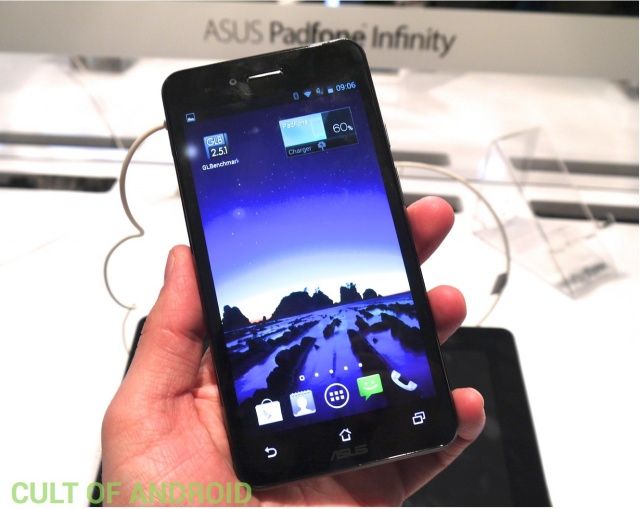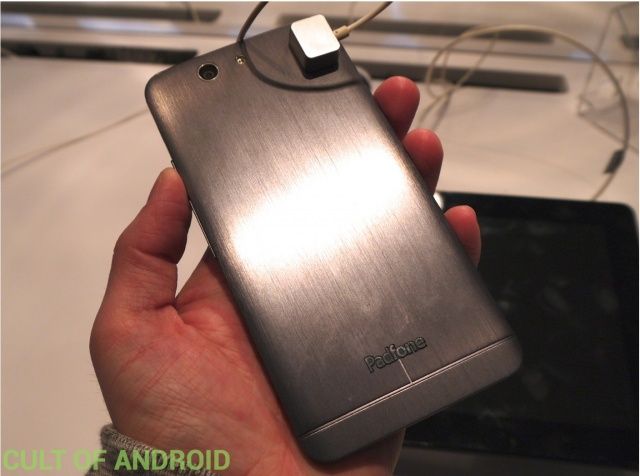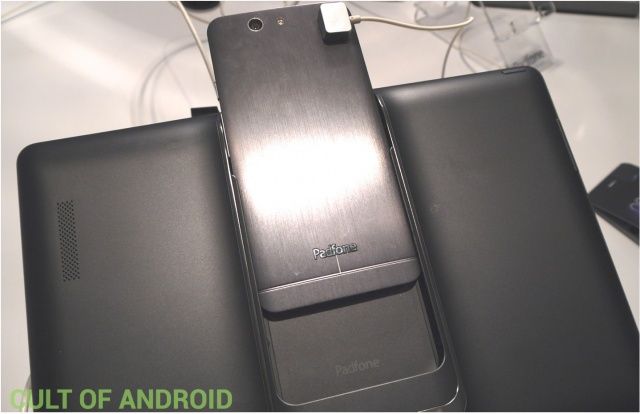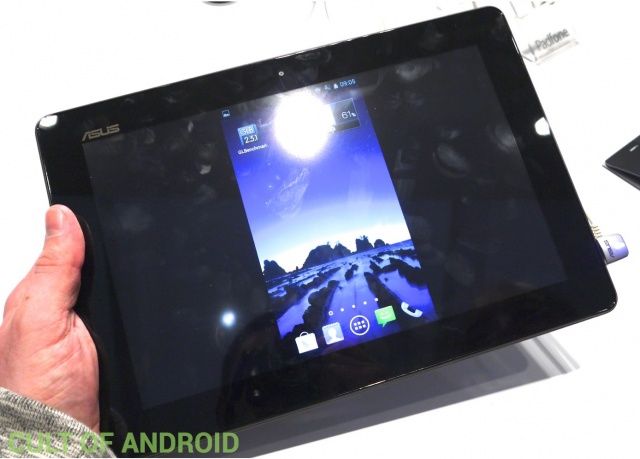Asus Unveils PadFone Infinity, A 5-Inch Smartphone That Transforms Into A Tablet [MWC 2013]
 BARCELONA, MOBILE WORLD CONGRESS — Thanks to the original PadFone’s rather disappointing start, we thought the probability of seeing a successor at Mobile World Congress was slim at best. But we couldn’t be more wrong. Asus has just unveiled the PadFone Infinity, a 5-inch smartphone that transforms into a 10.1-inch tablet with the help of a clever docking station.
BARCELONA, MOBILE WORLD CONGRESS — Thanks to the original PadFone’s rather disappointing start, we thought the probability of seeing a successor at Mobile World Congress was slim at best. But we couldn’t be more wrong. Asus has just unveiled the PadFone Infinity, a 5-inch smartphone that transforms into a 10.1-inch tablet with the help of a clever docking station.
The device has some impressive specifications, including a 1080p display, a quad-core Snapdragon 600 processor, and a 13-megapixel camera. But do you really want a smartphone that transforms into a tablet? We went hands-on with the device to find out.
There’s no doubt that the PadFone Infinity is a great smartphone. It has a gorgeous, scratch-resistant, 5-inch 1080p display that offers 441 pixels-per-inch; a 1.7GHz Snapdragon 600 processor with Adreno 320 graphics, and 2GB of RAM. It comes with 32GB or 53GB of internal storage, which will come in handy if you’re going to take plenty of photos with its 13-megapixel Sony camera, which boasts autofocus and an LED flash.
The Infinity also has a 2-megapixel camera on its front, LTE connectivity, GPS, Bluetooth 4.0, NFC, and a 2,400mAh battery that promises up to 19 hours of 3G talk-time and up to 410 hours of standby time. All of these components are packed into a rather attractive form factor that weighs just 141 grams, and measures 8.9mm at its thickest point and 6.3mm at its thinnest.
The Infinity has a brushed-metal unibody and double-anodized, “diamond cut” edges that give it a really premium feel. This is a high-end handset, and that’s noticeable the moment you pick up the device. But it’s not just a handset.
The PadFone Infinity Station is a dock that instantly turns the smartphone into a tablet. It has a 10.1-inch screen that’s also scratch-resistant, with a 1920×1200 resolution that offers 224 pixels-per-inch. The device uses “DynamicDisplay” technology — developed by Asus — that automatically reformats apps to suit the larger display.
Those I tested at the Asus booth worked pretty well — just like any Android app that supports both smartphones and tablets. But the device only had a small number of third-party apps installed, so it was hard to tell how that DynamicDisplay technology worked with smartphone-only apps that are designed for smaller screens.
With the Infinity inside the tablet dock, you can still use its rear-facing camera, but there’s a 1-megapixel front-facing camera built-in for video calling. The dock also has its own ambient light sensor and e-compass, high-quality speakers with Asus SonicMaster technology, and a 5,000mAh battery.
The PadFone Infinity offers a number of benefits, according to Asus, which include no more syncing — anything on your smartphone is also on your tablet; and the opportunity to save on data costs by using just one plan with two devices. But I’m not sure those things could convince me to adopt the device.
I think the PadFone is a nifty idea, and Asus executes it rather well. But I prefer my smartphone to be my smartphone, and my tablet to be my tablet.
Asus doesn’t even give the PadFone a compelling price tag that makes the all-in-one approach worthwhile. It comes with a €999 (approx. $1,300) price tag, which could buy you a Nexus 4, a Nexus 7, and a Nexus 10 — with change left over.
The PadFone Infinity will make its debut in Europe this April, but there’s no word on a U.S. release just yet. It will launch with Android 4.2 Jelly Bean pre-installed.







